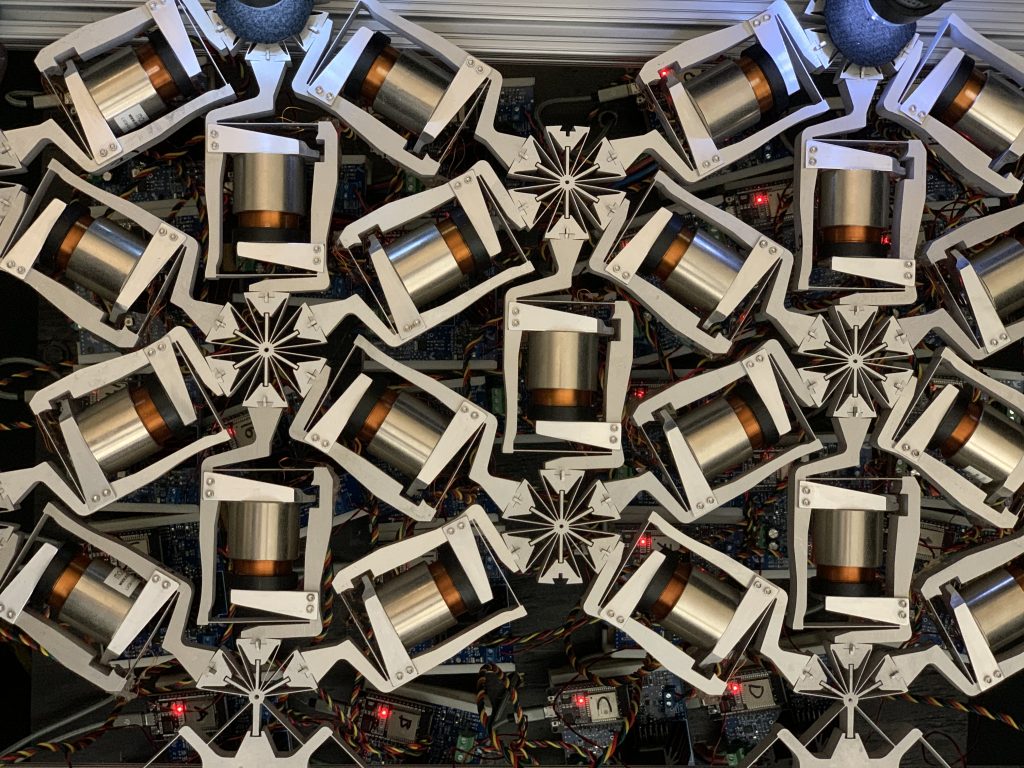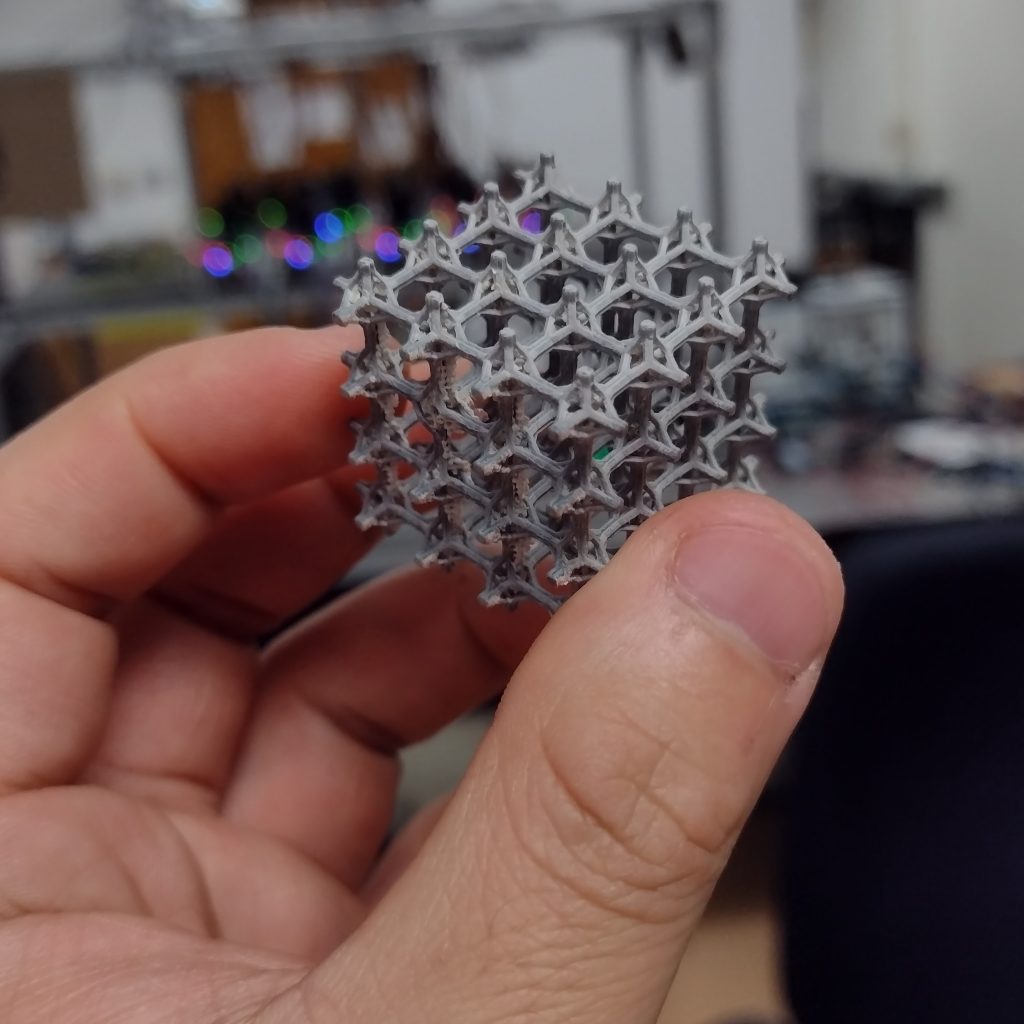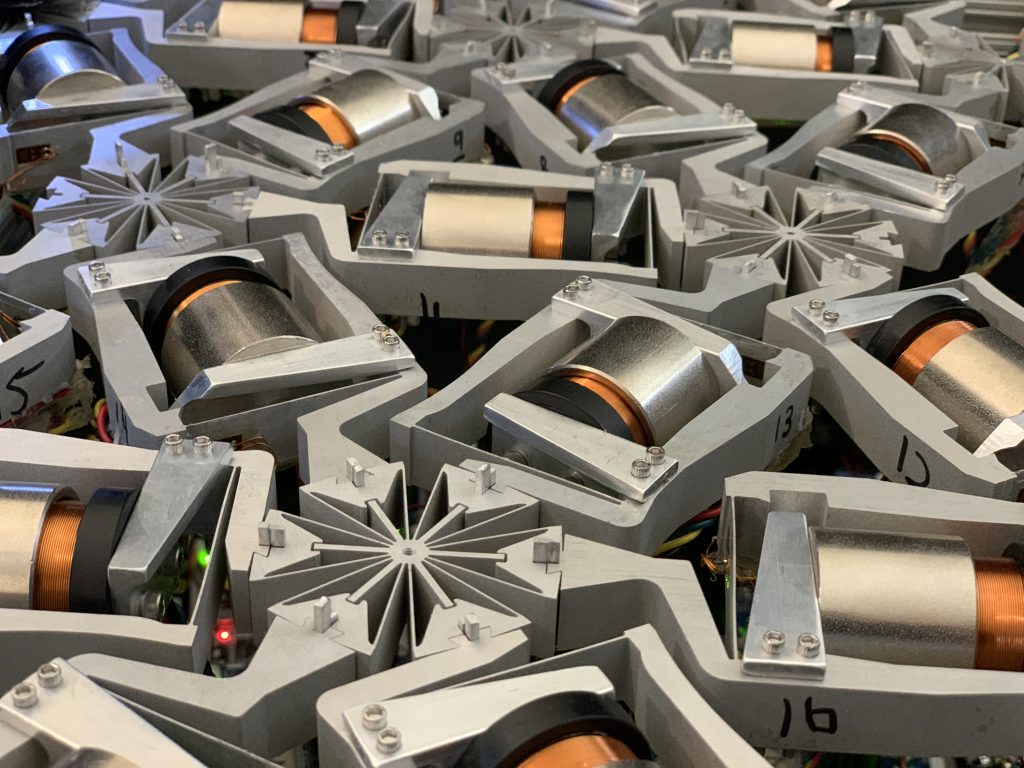[ad_1]

This connection of springs is a mannequin new type of materials that may change form and be taught new properties. Jonathan Hopkins, CC BY-ND
By Ryan H. Lee (PhD Pupil in Mechanical and Aerospace Engineering, School of California, Los Angeles)
A mannequin new type of materials could also be taught and enhance its means to deal with beautiful forces on account of a novel lattice improvement with connections of variable stiffness, as described in a mannequin new paper by my colleagues and me.

Architected offers – like this 3D lattice – get their properties not from what they’re made out of, nonetheless from their improvement. Ryan Lee, CC BY-ND
The mannequin new provides is a sort of architected provides, which might get its properties primarily from the geometry and specific traits of its design fairly than what it’s made out of. Take hook-and-loop supplies closures like Velcro, as an illustration. It doesn’t matter whether or not or not or not it’s constituted of cotton, plastic or one other substance. So long as one aspect is a material with stiff hooks and the opposite aspect has fluffy loops, the fabric can have the sticky properties of Velcro.
My colleagues and I based our new provides’s building on that of a synthetic neural neighborhood – layers of interconnected nodes that may be taught to do duties by altering how heaps significance, or weight, they place on every connection. We hypothesized {{{that a}}} mechanical lattice with bodily nodes might in all probability be educated to take care of constructive mechanical properties by adjusting every connection’s rigidity.
To look out out if a mechanical lattice would have the flexibleness to undertake and maintain new properties – like taking over a mannequin new form or altering directional power – we began off by creating a pc mannequin. We then chosen a desired form for the fabric together with enter forces and had a pc algorithm tune the tensions of the connections in order that the enter forces would produce the required form. We did this instructing on 200 totally completely completely different lattice constructions and located {{{that a}}} triangular lattice was finest at reaching all the shapes we examined.
As rapidly as a result of the fairly a couple of connections are tuned to attain a set of duties, the fabric will proceed to react all through the specified means. The instructing is – in a way – remembered all through the event of the fabric itself.
We then constructed a bodily prototype lattice with adjustable electromechanical springs organized in a triangular lattice. The prototype is product of 6-inch connections and is about 2 toes extended by 1½ toes large. And it labored. When the lattice and algorithm labored collectively, the fabric was in a position to be taught and alter form notably methods when subjected to completely completely completely different forces. We title this new provides a mechanical neural neighborhood.

The prototype is 2D, nonetheless a 3D model of this provides may have many makes use of. Jonathan Hopkins, CC BY-ND
Why it factors
Except for some dwelling tissues, just some offers could also be taught to be bigger at coping with unanticipated loads. Think about a aircraft wing that your entire sudden catches a gust of wind and is pressured in an unanticipated route. The wing can’t change its design to be stronger in that route.
The prototype lattice provides we designed can adapt to altering or unknown circumstances. In a wing, as an illustration, these modifications might in all probability be the buildup of inside harm, modifications in how the wing is said to a craft or fluctuating exterior loads. Each time a wing made out of a mechanical neural neighborhood knowledgeable one in every of these situations, it’d strengthen and soften its connections to keep up up desired attributes like directional power. Over time, by means of successive modifications made by the algorithm, the wing adopts and maintains new properties, along with every conduct to the remaining as a sort of muscle reminiscence.
One amongst these provides may have far reaching capabilities for the longevity and effectivity of constructed constructions. Not solely may a wing product of a mechanical neural neighborhood provides be stronger, it may be educated to morph into shapes that maximize gasoline effectivity in response to altering circumstances spherical it.
What’s nonetheless not acknowledged
Thus far, our workforce has labored solely with 2D lattices. Nonetheless utilizing laptop computer pc modeling, we predict that 3D lattices would have a heaps higher performance for locating out and adaptation. This enhance is because of the actuality {{that a}} 3D improvement may have tens of occasions additional connections, or springs, that don’t intersect with each other. Nonetheless, the mechanisms we utilized in our first mannequin are far too troublesome to help in a large 3D improvement.
What’s subsequent
The fabric my colleagues and I created is a proof of idea and shows the potential of mechanical neural networks. Nonetheless to convey this concept into the exact world would require determining tips on strategies to make the actual particular person devices smaller and with precise properties of flex and pressure.
We hope new analysis all through the manufacturing of offers on the micron scale, together with work on new offers with adjustable stiffness, will result in advances that make extraordinarily environment friendly good mechanical neural networks with micron-scale components and dense 3D connections a ubiquitous actuality all through the close to future.
![]()
Ryan Lee has acquired funding from the Air Drive Workplace of Science Analysis .
This textual content material appeared in The Dialog.
The Dialog
is an unbiased present of research and views, sourced from the tutorial and analysis group and delivered direct to the general public.

The Dialog
is an unbiased present of research and views, sourced from the tutorial and analysis group and delivered direct to the general public.
[ad_2]
